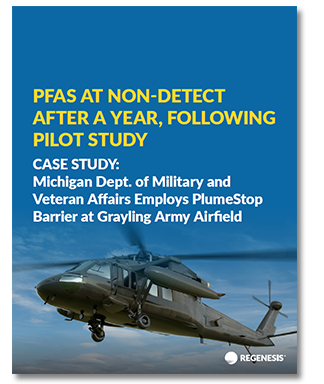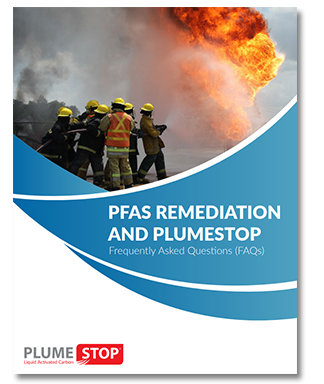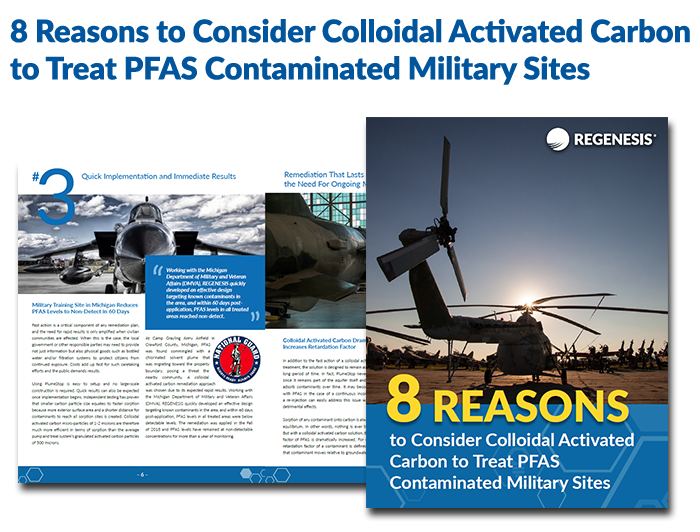This ebook outlines 8 reasons to consider colloidal activated carbon to treat PFAS contaminated military sites. While no single technology is optimal for all situations, under the right circumstances, colloidal activated carbon should be considered whenever designing a PFAS remediation strategy given its proven success at highly contaminated sites including military bases among others.
eBook highlights:
- Immediately stop the spread of PFAS, eliminating risk to human health and the environment
- Proven cost-effective compared to other remedial technologies
- Remediation that lasts for decades without the need for ongoing management
- In Situ applications are minimally disruptive, faster to implement and have shorter project lifecycles
The most prevalent method to treat PFAS is an ex situ pump and treat system with activated carbon filters. But this process is challenged by the wide-area and dilute nature of PFAS plumes. Additionally, pump and treat system’s high operating costs can make it impractical for organizations operating within tightly controlled budgets. Recognizing these challenges, REGENESIS® offers an alternative to traditional remedial technologies, working with clients to apply PlumeStop®, a colloidal suspension of activated carbon particles milled down to 1-2 microns formulated to widely distribute in situ under low pressure.
Complete the form on this page to download the free ebook.
Additional PFAS Resources
 PFAS AT NON-DETECT
AFTER A YEAR, FOLLOWING
PILOT STUDY
PFAS AT NON-DETECT
AFTER A YEAR, FOLLOWING
PILOT STUDY
PlumeStop
Barrier Employed at Grayling Army Airfield
This case study reviews a pilot test to remove PFAS risk via an in situ colloidal activated carbon barrier at Camp Grayling in Crawford County, Michigan, a large year-round military training center operated by the Michigan Army National Guard (MIARNG). Colloidal activated carbon was selected because of the expected rapid reductions of PFAS by removal from the dissolved mobile phase, as well as its expected lower total project costs when compared to operating a mechanical system over a similar time. The MIARNG decided to conduct a PlumeStop pilot test to determine if this treatment would meet their site goals prior to a possible full-scale application. The goals for this pilot project were to utilize an approach that could both protect the Grayling community from exposure and cost-effectively expand to a full-scale application. Download the case study here.
 PFAS REMEDIATION
AND PLUMESTOP
PFAS REMEDIATION
AND PLUMESTOP
Frequently Asked Questions (FAQs)
After our remediation technical webinar, Eliminating Risk of PFAS Contamination: Low-Cost In Situ Remediation with Colloidal Activated Carbon, presenter Scott Wilson, President & CEO of REGENESIS, provided answers to all the questions that we were unable to address during the webinar. These questions, along with Mr. Wilson's responses, shed light on cutting edge in situ remediation strategies for PFAS using colloidal activated carbon, and because of this we are making them all available to the remediation industry. You can access the Q&A from the webinar here. Download the ebook here.


